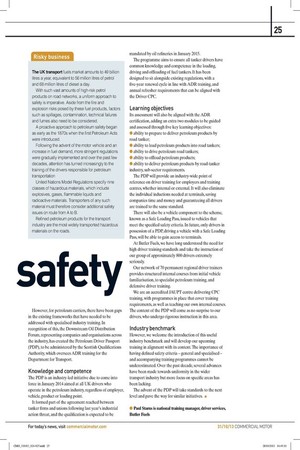Risky business
Page 20

If you've noticed an error in this article please click here to report it so we can fix it.
The UK transport fuels market amounts to 49 billion litres a year, equivalent to 56 million litres of petrol and 68 million litres of diesel a day.
With such vast amounts of high-risk petrol products on road networks, a uniform approach to safety is imperative. Aside from the fire and explosion risks posed by these fuel products, factors such as spillages, contamination, technical failures and fumes also need to be considered.
A proactive approach to petroleum safety began as early as the 1870s when the first Petroleum Acts were introduced. Following the advent of the motor vehicle and an increase in fuel demand, more stringent regulations were gradually implemented and over the past few decades, attention has turned increasingly to the training of the drivers responsible for petroleum transportation
United Nations Model Regulations specify nine classes of hazardous materials, which include explosives, gases, flammable liquids and radioactive materials. Transporters of any such material must therefore consider additional safety issues on route from A to B.
Refined petroleum products for the transport industry are the most widely transported hazardous materials on the roads.









































